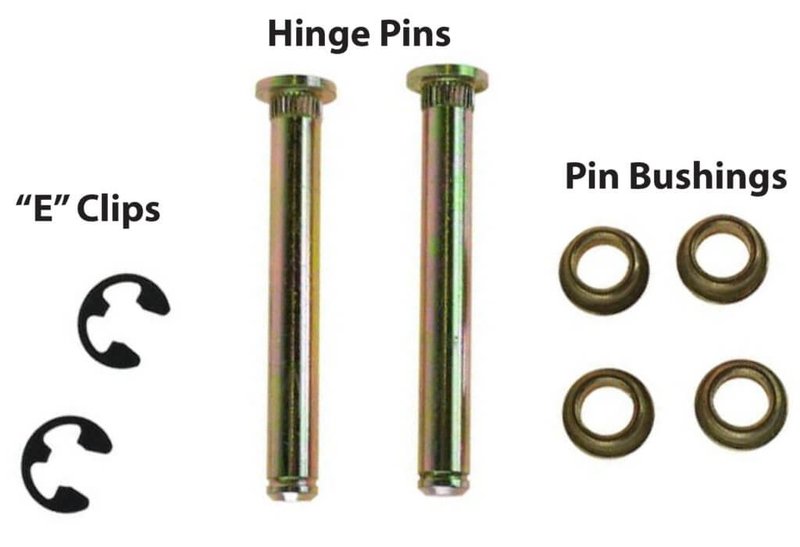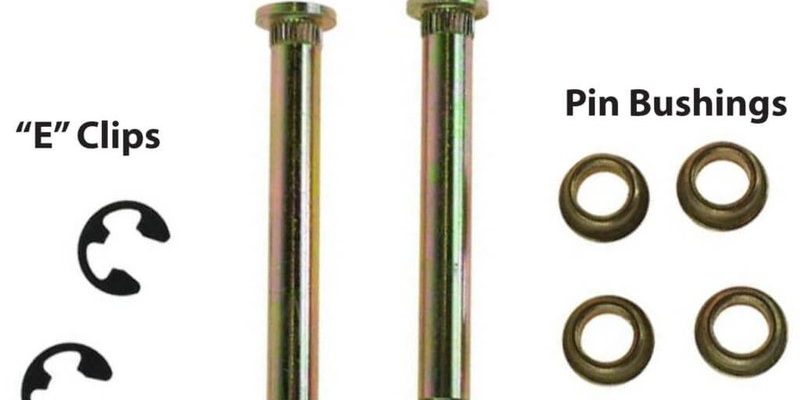
Whether you’re working on a vehicle, a cabinet, or a household door, understanding how to identify the right size for replacement door pins can save you time and frustration. Let’s break it down step by step, so you can tackle this task like a pro without needing a toolbox full of fancy gadgets.
Understanding Door Pins and Their Purpose
Before diving into the specifics of size identification, let’s explore what door pins are and why they matter. Door pins serve as the hinge mechanism that allows a door to swing open and closed smoothly. Think of them as the unsung heroes of your door’s operation. They hold the door in place, allowing it to pivot without wobbling or getting stuck.
Most doors have two pins, but some might have more, especially if they’re heavier or used more frequently. This is where knowing the size and type of your door pin becomes important. Without the correct pin, your door might not function properly, leading to awkward movements or even damage over time.
There are typically two common types of door pins: solid and hollow. Solid pins are sturdier and generally used in doors that need to withstand significant wear and tear. Hollow pins, on the other hand, are often used in lighter doors. Understanding these distinctions can help you choose the right replacement.
Measuring Your Existing Door Pins
To identify the correct size for your replacement door pins, you first need to measure the ones already in use—whether they’re working well or not. Here’s how to do that:
1. Remove the Current Pin: Start by opening the door to access the hinge. Remove the existing pin using a hammer and a small screwdriver or punch if needed. Gently tap the screwdriver under the pin head to lift it out.
2. Measure Length: Lay the pin on a flat surface and use a measuring tape to determine its length. Measure from the top of the pin to the bottom, making sure to get an accurate reading.
3. Measure Diameter: Next, measure the diameter of the pin. You can use calipers for the most precise measurement, but if you don’t have those, a ruler will do. Just ensure to measure from one side to the other at the widest point.
Now that you have these measurements, you’re one step closer to finding the right replacement door pins!
Choosing the Right Replacement Door Pins
With your measurements in hand, it’s time to shop for replacement pins. Here’s what you need to consider:
– Material: Door pins are available in a variety of materials, including steel, stainless steel, and even brass. Think about durability and whether the environment might affect the pins (like moisture for outdoor doors).
– Brand Compatibility: Some door hardware, especially on vehicles, is designed to work with specific brands. Check if your door pin needs to match a particular manufacturer, as many brands have unique specifications.
– Weight Capacity: Ensure the replacement pin can handle the weight of the door. Heavier doors need sturdier pins, while lighter doors require less robust options.
– Pin Type: Finally, consider whether you need a solid or hollow pin based on the door’s usage. Using the wrong type can lead to premature wear and possibly failure.
With all these factors in mind, you’re likely to find a suitable replacement that will restore your door’s function.
Common Mistakes to Avoid When Replacing Door Pins
It’s easy to rush into replacing door pins, but there are a few common mistakes you’ll want to avoid:
– Ignoring Measurements: Failing to measure properly can lead you to purchase the wrong size, leaving you with a door that still doesn’t work right.
– Assuming All Pins Are the Same: As mentioned, door pins come in various styles and materials. Just because a pin looks similar doesn’t mean it will fit or function the same way.
– Neglecting Condition of Hinges: When replacing door pins, take a close look at the hinges themselves. If they’re worn or damaged, it may not matter how good the new pins are.
Taking your time and being attentive to these details can make all the difference in effectively replacing your door pins without hassle.
Where to Buy Replacement Door Pins
Once you’ve decided on the correct size and type of pin, you’ll need a place to buy them. Here are a few options:
1. Local Hardware Stores: Stores like Home Depot or Lowe’s often have a wide range of door pins. Plus, the staff can help you find what you need.
2. Online Retailers: Websites like Amazon or specialty hardware sites give you access to many brands and types. Just ensure to check reviews for quality.
3. Automotive Stores: If your door pins are for a vehicle, check auto parts stores like AutoZone or O’Reilly Auto Parts. They typically have a selection suited for various makes and models.
4. Manufacturer Websites: If your door pins need to be brand-specific, visiting the manufacturer’s website is a great option. They might have the exact replacement you need.
These resources can help ensure you get the right pins quickly, getting your doors back in top shape.
Tips for Installing Replacement Door Pins
Installing replacement door pins isn’t all that difficult, but there are some important tips to make the process smoother:
– Use Lubrication: Apply a small amount of lubricant to the pin and the hinge before installation. This helps the pin slide in and out easily and reduces wear over time.
– Align Carefully: While inserting the pin, align it with the hinge holes properly. A misaligned pin can create issues down the road, leading to squeaks or stuck doors.
– Test Movement: After installing, swing the door back and forth to ensure smooth operation. If you notice any resistance, it might be worth double-checking the alignment again.
Following these tips can set you up for success, ensuring your door operates smoothly and efficiently for years to come.
Identifying the correct size for replacement door pins doesn’t have to be daunting. With a little understanding of door hardware, some measuring, and knowing your options, you can easily tackle this task. Remember, the right pins ensure your doors operate smoothly, reducing wear and tear in the long run.
Whether you’re replacing pins in a vehicle or a home door, being methodical in your approach will pay off. Take your time, consider all factors, and soon enough, your door will be back to its best self. Happy fixing!
